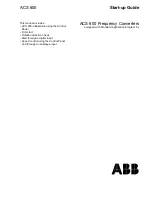
magnet will rotate 1° over the duration of a single conversion. By contrast, comparing the fastest integration time
of 75 μs, the magnet would have to spin 64 × faster to similarly rotate by 1° during one conversion.
For any motor, especially when loaded, there must be a deceleration period as the shaft approaches the target
position. It is necessary, therefore, to understand the phase delay to predict when to begin the deceleration. As
the shaft speed is increased or decreased, the system must account for this delay to accurately understand the
actual motor position.
While increased averaging reduces the impact of noise on the measurement,
increased sample time results in a greater discrepancy between actual motor shaft angle and the collected data
from the sensor.
Speed (RPM)
A
ngle P
has
e E
rror (d
eg)
1
2 3 4 5 7 10
20 30 50 100 200
500 1000
5000
0.0002
0.0005
0.001
0.002
0.005
0.01
0.02
0.05
0.1
0.2
0.5
1
2
5
10
20
50
1x Averaging
2x Averaging
4x Averaging
8x Averaging
16x Averaging
32x Averaging
Figure 2-3. Angle Phase Error vs Motor Speed
2.3.4 Sensor Location
Simulations of the magnetic field were performed to evaluate the potential locations for on-axis, in-plane, and
off-axis alignments.
With a diametric magnet, the largest magnitude magnetic field vector at any air gap distance occurs when
evaluating the field aligned to the polarization of the magnet. In this case, the first target location to examine is
centered vertically with the magnet along a line directed radially outward from the center of the magnet.
Figure 2-4. In-Plane Sensor Alignment
At this location, it is worthwhile to examine the peak magnetic flux density as well as the quality of the magnetic
field for each component of the B-field over one full rotation.
demonstrates the peak magnitude which
is observed as the horizontal distance of the sensor changes as depicted in
.
System Overview
6
Absolute Angle Encoder Reference Design With Hall-Effect Sensors for
Precise Motor Position Control
Copyright © 2022 Texas Instruments Incorporated







































